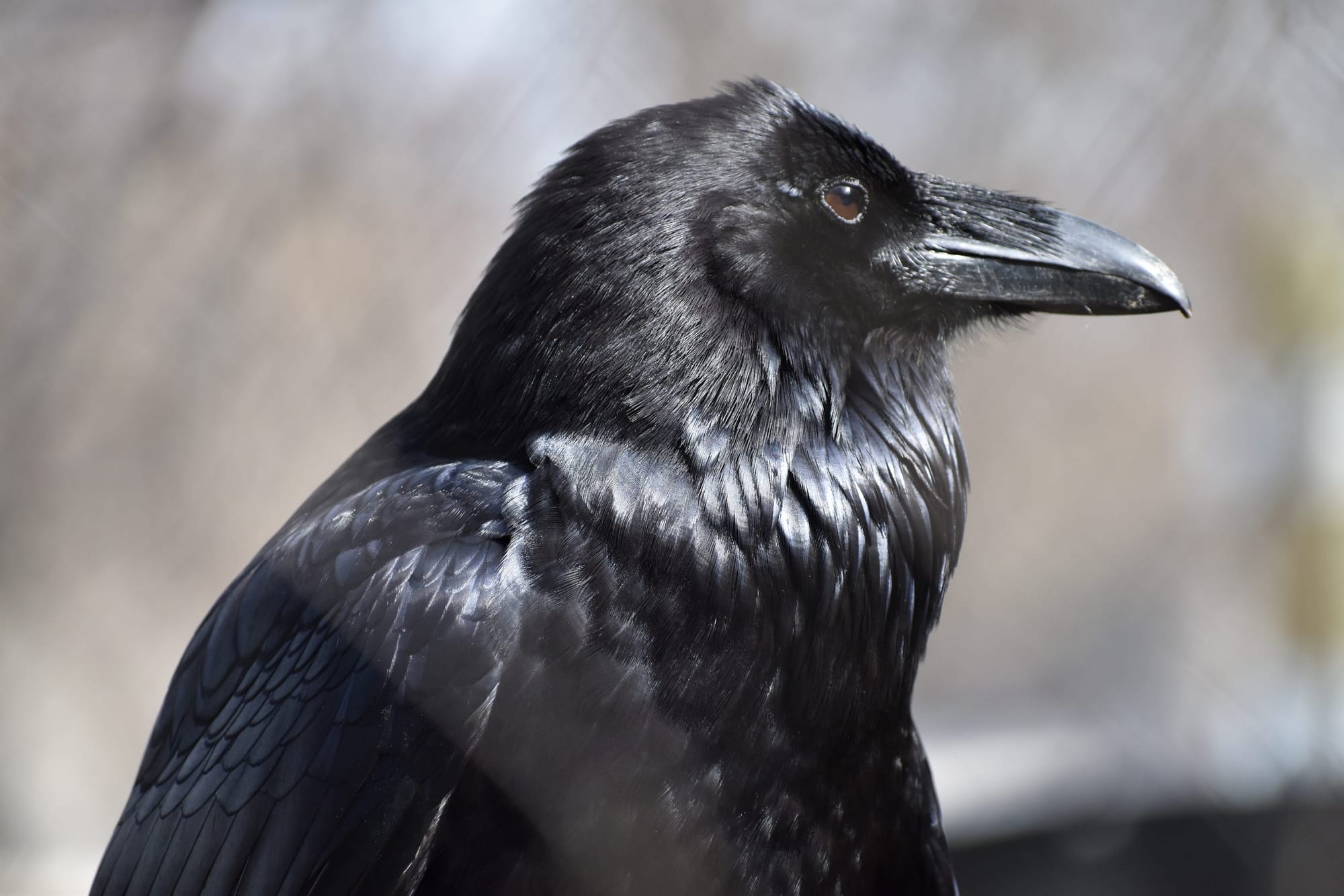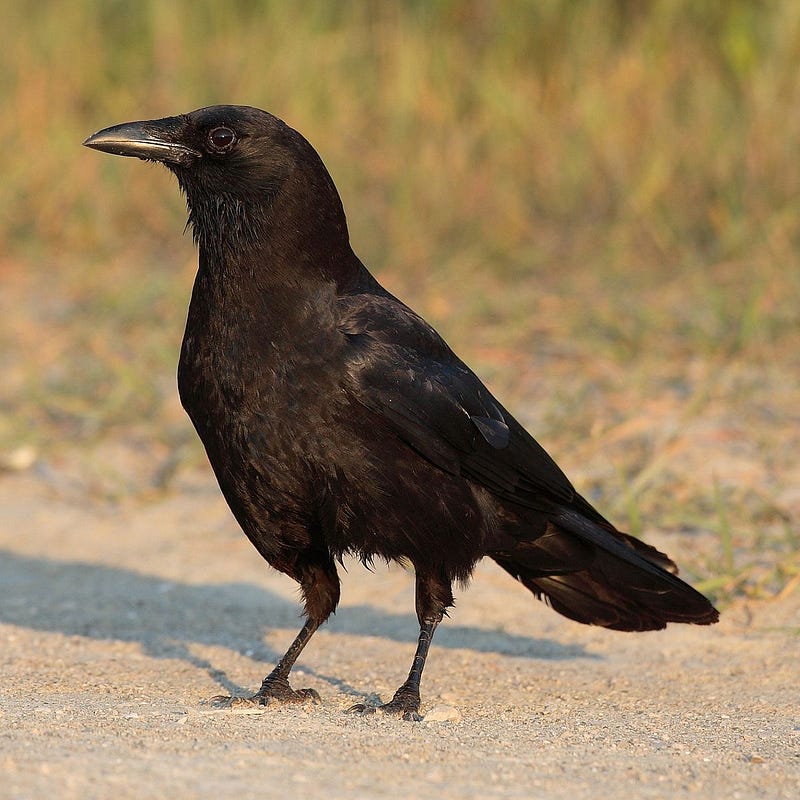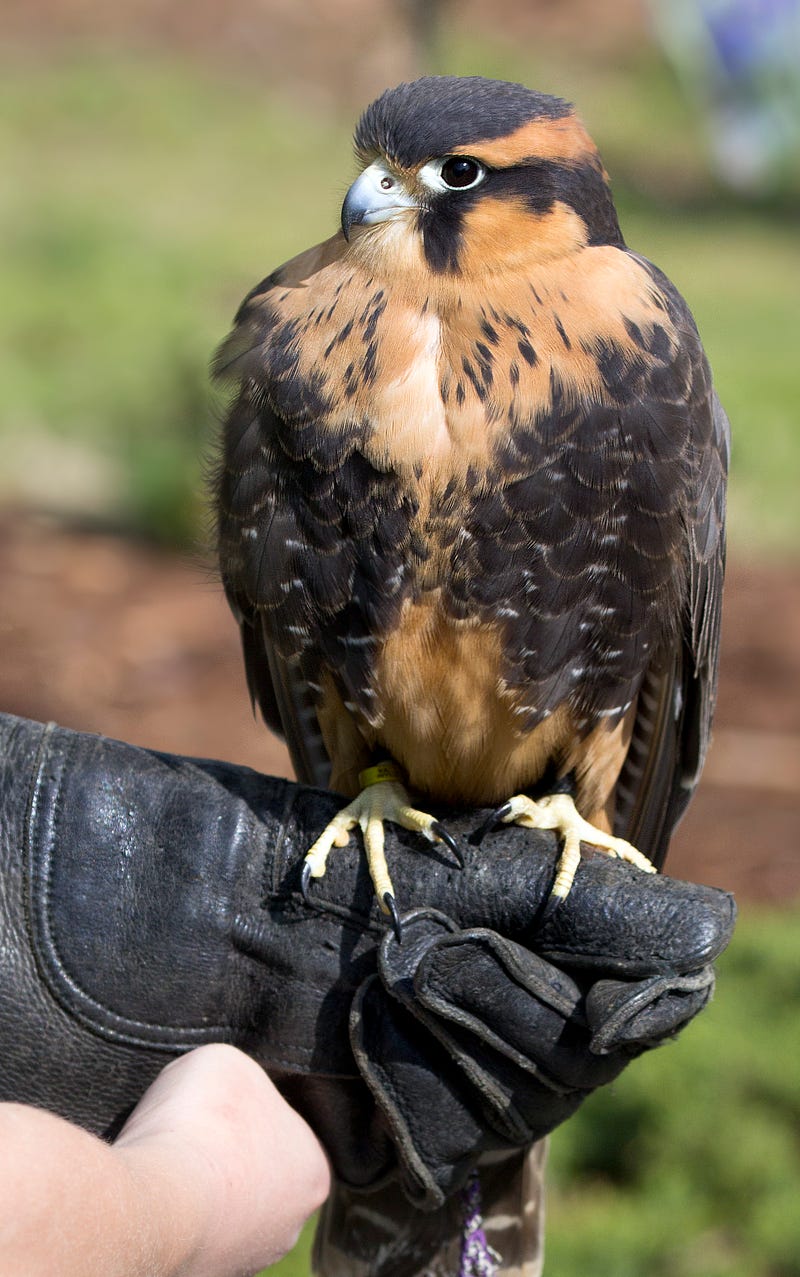
Ravens are amazing birds. My final story of Season 5 included some examples of the intelligence evident in them and their close relatives. This was in relation to the use of tools for foraging. However, this is not the only indicator of high intellect to be found in this group of birds. While researching the story on tool use, I also found information about different aspects of play in corvids.
The majority of my readers will be most familiar with this group of birds from the ubiquitous American crow, Corvus brachyrhynchos, a common species that is widespread throughout temperate and subtropical North America. Here in Florida, we have another crow that is similar in appearance. The main distinguishing feature of the fish crow, Corvus ossifragus, is its two-note call.

However, the main focus of this story is the common raven, Corvus corax, found throughout the Northern Hemisphere. It is one of the most widespread and one of the largest corvids. On average, it is 14cm longer than an American crow from beak to tail, weighs twice as much or more, and an additional 50% wingspan. However, the dry facts really don’t do them justice. They’re one of my favorite birds.
Now, this might seem a bit odd to those who know me. I like birds so much I doubt I could ever pick a single favorite. However, I’ve featured several of my personal top birds in previous stories here. These include the great blue heron, Ardea herodias, the swallow-tailed kite, Elanoides forficatus, and the wood stork, Mycteria americana. All of these are native to Florida, but the raven is not. My fascination with this species began before I moved here, at place called Blue Hills Trailside Museum, an affiliate of Massachusetts Audubon. I did some volunteer work there, mainly cleaning cages for their educational program birds.
One of my favorites was a common raven with an injured wing. She would never be able to fly again, and seemed to know it, as she was the only bird who never tried to fly away from me even once when moving them out to clean the cages. She was also very picky. Most birds are handled with a gloved fist on the person’s off hand, like the falcon below (the primary hand was needed to help secure the leather cords on the legs called jesses), usually resting on the forefinger or thumb. This raven preferred a larger forearm glove. I suspect for the increased stability provided by resting on a larger area. Furthermore, while most trained birds will accept a glove regardless if it is left- or right-handed, this bird would only perch on a right-handed forearm glove. Any attempt to offer a gloved fist or a left forearm were met with biting. She also loved to snack on peanuts.

What does this have to do with play? I suspect that this particular raven was bored. She had a tendency to tear up the newspaper lining her cage only minutes after it was cleaned. Of course, this made cleaning her cage much more involved than many of the other birds, which usually just needed a quick wipe down and a new set of newspaper. However, this also made it difficult to know visually if her cage had been cleaned. She once gave me a bruise on my forearm through a thick leather glove by biting me when I tried to clean her cage for a second time in a day. Ravens are well known for their playful demeanor. I believe that tearing up her newspaper was an attempt to amuse herself the only way she knew how.
Ravens are one of the few species of wild animals known to make their own toys. They will break off sticks and use them to play within social groups. Young crows and ravens will even play games similar to ‘King of the Mountain’ or ‘Follow the Leader’. Like all of the examples we’ll be looking at this season, these games can help younger individuals to hone skills that they will need later in life. However, some non-human animals will engage in play just for the sheer enjoyment of it. The raven embodies this more than most, especially in the snow. Ravens love snow and they will play in it much like humans do. If they can find a suitable object, they will even sled down hills or rooftops.
Ravens Playing in Snow by June Hunter Images,YouTube
Corvid intelligence is easy to see in the inventiveness of their play. I had to resist the temptation to post half a dozen different videos that I found, but I encourage you to look for them yourself. Ravens will even play games with other animal species, almost taunting them to catch the raven, if it can. Always keep in mind, however, that these are still wild animals, despite their intelligence and playful nature. If I had not been wearing a glove, that raven would have given me a nasty wound and an accompanying scar. Appreciate the playfulness in nature, but always treat it with respect.
I hope this story gave you some insight into why I love ravens, despite never having encountered one in the wild. Also, the next time someone calls you a ‘birdbrain’, keep in mind that it’s actually a complement in some ways. As always, let me know what you like about my stories and if you have any topics you’d like me to cover in a future season.